($48):  Domaine Parent, arguably the best producer of Pommard, also makes this stunning white Monthélie. It’s a bit of an oddity because ninety percent of Monthélie’s production is red and the vast majority of Parent’s production comes from their own vineyards. … Read more
Domaine Parent, arguably the best producer of Pommard, also makes this stunning white Monthélie. It’s a bit of an oddity because ninety percent of Monthélie’s production is red and the vast majority of Parent’s production comes from their own vineyards. … Read more
All posts by admin
Domaine Guilhem et Jean Hugues Goisot, Bourgogne Côtes d’Auxerre (Burgundy, France) Gueules de Loup 2017
($35):  Goisot is a good example of why my mantra is producer, producer, producer. You can buy any of their wines and be thrilled. They are located in the far north of Burgundy, near Chablis and make an array of distinctive and captivating wines. … Read more
Goisot is a good example of why my mantra is producer, producer, producer. You can buy any of their wines and be thrilled. They are located in the far north of Burgundy, near Chablis and make an array of distinctive and captivating wines. … Read more
Domaine Michel Bouzereau, Bourgogne Blanc Côte d’Or (Burgundy, France) 2017
($30):  With the 2017 vintage, regulators added a new sub-category, Côte d’Or, to Bourgogne, the very broad regional appellation that allowed grapes to come from anywhere in Burgundy. Wines labeled Bourgogne Côte d’Or mean that the grapes all come from the famed Côte d’Or, the very heart of Burgundy. … Read more
With the 2017 vintage, regulators added a new sub-category, Côte d’Or, to Bourgogne, the very broad regional appellation that allowed grapes to come from anywhere in Burgundy. Wines labeled Bourgogne Côte d’Or mean that the grapes all come from the famed Côte d’Or, the very heart of Burgundy. … Read more
Maison Louis Latour, Mercurey (Côte Chalonnaise, Burgundy, France) 2015
($26, Kobrand Wine & Spirits):  Though Mercurey, a village in the Côte Chalonnaise, is best known for its reds, it’s a treasure trove of affordable Burgundy, both red and white. Louis Latour, one of Burgundy’s best producers, rarely disappoints. The 2015 vintage is one of the best of the decade.… Read more
Though Mercurey, a village in the Côte Chalonnaise, is best known for its reds, it’s a treasure trove of affordable Burgundy, both red and white. Louis Latour, one of Burgundy’s best producers, rarely disappoints. The 2015 vintage is one of the best of the decade.… Read more
Domaine Bart, Marsannay (Côte de Nuits, Burgundy, France) “Les Finottes” 2018
($30):  Domaine Bart is a star producer in Marsannay. This house makes splendid Grand Crus, such as Bonnes-Mares and Chambertin Clos de Bèze that routinely sell for $200+ a bottle upon release. Their skill is also found in a bevy of single-vineyard wines from the village of Marsannay, the northern most village of the Côte de Nuits. … Read more
Domaine Bart is a star producer in Marsannay. This house makes splendid Grand Crus, such as Bonnes-Mares and Chambertin Clos de Bèze that routinely sell for $200+ a bottle upon release. Their skill is also found in a bevy of single-vineyard wines from the village of Marsannay, the northern most village of the Côte de Nuits. … Read more
Château de la Maltroye, Bourgogne Rouge (Burgundy, France) 2017
($27):  Château de la Maltroye, a top producer of both red and white wines from Chassagne-Montrachet, makes this charming Bourgogne Rouge from vineyards in that village that lie outside the boundaries of the village appellation. Delicate red fruit flavors balance its savory, herbal side. … Read more
Château de la Maltroye, a top producer of both red and white wines from Chassagne-Montrachet, makes this charming Bourgogne Rouge from vineyards in that village that lie outside the boundaries of the village appellation. Delicate red fruit flavors balance its savory, herbal side. … Read more
Domaine Jean et Giles Lafouge, Auxey-Duresses (Côte de Beaune, Burgundy, France) 2017
($37):  One formula for Burgundy bargains is to find a top producer who lives and has vineyards in an out-of-the-way place. Domaine Lafouge’s Auxey-Duresses (“oh say doo ress”) fits that formula. Auxey-Duresses, like Monthélie, which it abuts, is situated in the prestigious Côte d’Or, but most of its vineyards lie even further west. … Read more
One formula for Burgundy bargains is to find a top producer who lives and has vineyards in an out-of-the-way place. Domaine Lafouge’s Auxey-Duresses (“oh say doo ress”) fits that formula. Auxey-Duresses, like Monthélie, which it abuts, is situated in the prestigious Côte d’Or, but most of its vineyards lie even further west. … Read more
Firesteed, Willamette Valley (Oregon) Pinot Gris 2019
($16): 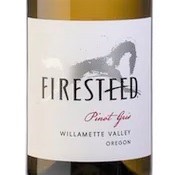 With roughly twice the acreage planted as Chardonnay, Pinot Gris (Pinot Grigio, in Italian) is Oregon’s second most widely planted variety, after Pinot Noir. As a wine, Pinot Gris’ spectrum is wide, ranging from light and innocuous to rich with stone fruit flavors and even some sweetness. … Read more
With roughly twice the acreage planted as Chardonnay, Pinot Gris (Pinot Grigio, in Italian) is Oregon’s second most widely planted variety, after Pinot Noir. As a wine, Pinot Gris’ spectrum is wide, ranging from light and innocuous to rich with stone fruit flavors and even some sweetness. … Read more
Gary Farrell Vineyards & Winery, Russian River Valley (Sonoma County, California) Chardonnay “Russian River Selection” 2018
($35): 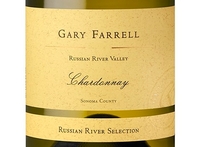 Gary Farrell is well-known for producing excellent single-vineyard Pinot Noirs. They also produce a bevy of single-vineyard Chardonnays. This one, however, their Russian River Selection, is a blend of Chardonnay grown in five vineyards: Westside Farms, Bacigalupi Vineyard, Rochioli, Allen and Olivet Lane. … Read more
Gary Farrell is well-known for producing excellent single-vineyard Pinot Noirs. They also produce a bevy of single-vineyard Chardonnays. This one, however, their Russian River Selection, is a blend of Chardonnay grown in five vineyards: Westside Farms, Bacigalupi Vineyard, Rochioli, Allen and Olivet Lane. … Read more
Laetitia, Arroyo Grande Valley (Central Coast, California) Chardonnay Estate 2019
($22):  Let me jump to the bottom line: This is a great value Chardonnay. Racy and clean, this vigorous Chardonnay has the barest hint of alluring creaminess as well. Though not an opulent style of Chardonnay, it still has plenty of stuffing and terrific energy. … Read more
Let me jump to the bottom line: This is a great value Chardonnay. Racy and clean, this vigorous Chardonnay has the barest hint of alluring creaminess as well. Though not an opulent style of Chardonnay, it still has plenty of stuffing and terrific energy. … Read more
Merry Edwards, Russian River Valley (Sonoma County, California) Pinot Noir Meredith Estate 2017
($68):  Wow! It’s worth repeating, Wow! And I don’t mean that in terms of power, I mean that in terms of stature and finesse. Merry Edwards has always been one of my favorite producers, especially for Pinot Noir, but she has outdone herself with their 2017 Meredith Estate. … Read more
Wow! It’s worth repeating, Wow! And I don’t mean that in terms of power, I mean that in terms of stature and finesse. Merry Edwards has always been one of my favorite producers, especially for Pinot Noir, but she has outdone herself with their 2017 Meredith Estate. … Read more
Ridge Vineyards, Dry Creek Valley (Sonoma County, California) “Lytton Springs” 2018
($44): 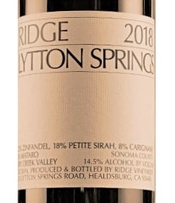 Full disclosure: I am prejudiced against Zinfandel. So, perhaps my enthusiasm for this wine is helped by the absence of a varietal name on the label, but I don’t think so because I tasted it in a line-up of Zinfandels at a SommCon Virtual Summit. … Read more
Full disclosure: I am prejudiced against Zinfandel. So, perhaps my enthusiasm for this wine is helped by the absence of a varietal name on the label, but I don’t think so because I tasted it in a line-up of Zinfandels at a SommCon Virtual Summit. … Read more
Col d’Orcia, Sant’Antimo DOC (Tuscany, Italy) “Rosso Col d’Orcia” 2014
($25, Taub Family Selections): 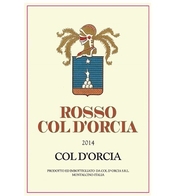 Col d’Orcia, best known for their stunning Brunello di Montalcino, makes other wines. At first glance at the label, you might think this is their Rosso di Montalcino. It’s not. Also, don’t be put off by the 2014 vintage, which was, as the Italians themselves describe it, “difficult.” … Read more
Col d’Orcia, best known for their stunning Brunello di Montalcino, makes other wines. At first glance at the label, you might think this is their Rosso di Montalcino. It’s not. Also, don’t be put off by the 2014 vintage, which was, as the Italians themselves describe it, “difficult.” … Read more
Travaglino, Oltrepò Pavese DOC (Lombardy, Italy) Pinot Nero Poggio della Butinera Riserva 2015
($42): 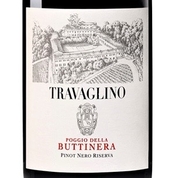 Italy is not known for Pinot Nero (aka Pinot Noir) the way it is for Nebbiolo or Sangiovese. In the relatively cool Oltrepò Pavese region, the grape does well, as Travaglino shows with this 2015 Riserva. Nicely concentrated, but certainly nowhere near a New World style, it delivers both fruit flavors and savory character, the latter of which is immediately apparent in the nose and carries onto the palate. … Read more
Italy is not known for Pinot Nero (aka Pinot Noir) the way it is for Nebbiolo or Sangiovese. In the relatively cool Oltrepò Pavese region, the grape does well, as Travaglino shows with this 2015 Riserva. Nicely concentrated, but certainly nowhere near a New World style, it delivers both fruit flavors and savory character, the latter of which is immediately apparent in the nose and carries onto the palate. … Read more
Champagne Devaux, Champagne (France) “Augusta” Brut NV
($40, Seaview Imports):  The Augusta refers to Augusta-Maria Herbin, Devaux’s wife, another widow of Champagne, who led the firm from 1879 to 1895. Family ownership ended in 1987, when, according to their website, it passed to the Union Auboise, now Groupe Vinicole Champagne Devaux, a co-operative. … Read more
The Augusta refers to Augusta-Maria Herbin, Devaux’s wife, another widow of Champagne, who led the firm from 1879 to 1895. Family ownership ended in 1987, when, according to their website, it passed to the Union Auboise, now Groupe Vinicole Champagne Devaux, a co-operative. … Read more
Bodegas Caro, Mendoza (Argentina) Malbec “Aruma” 2018
($15, Taub Family Selections): 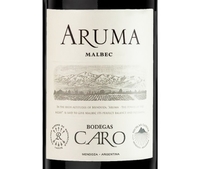 This Malbec is an unusual wine for Bodegas Caro, a collaboration between Domaines Barons de Rothschild (Lafite) and Nicolas Catena, two stars in the wine world. It is unusual because they pride themselves on combining two winemaking cultures, Bordeaux and Argentina, and their two respective grapes, Cabernet Sauvignon and Malbec, but there’s no Cab in this. … Read more
This Malbec is an unusual wine for Bodegas Caro, a collaboration between Domaines Barons de Rothschild (Lafite) and Nicolas Catena, two stars in the wine world. It is unusual because they pride themselves on combining two winemaking cultures, Bordeaux and Argentina, and their two respective grapes, Cabernet Sauvignon and Malbec, but there’s no Cab in this. … Read more
Dry Creek Vineyard, Sonoma County (California) Sauvignon Blanc 2019
($20): 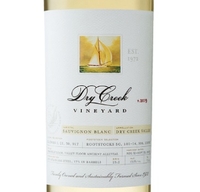 Founded in 1972 by David Stare and still family-run, Dry Creek Vineyard continues to excel. Dry Creek Vineyard’s initial focus was on Sauvignon Blanc because Stare loved the wines of the Loire Valley. So, it’s not surprising that Dry Creek Vineyard continues to make a consistently fine Sauvignon Blanc. … Read more
Founded in 1972 by David Stare and still family-run, Dry Creek Vineyard continues to excel. Dry Creek Vineyard’s initial focus was on Sauvignon Blanc because Stare loved the wines of the Loire Valley. So, it’s not surprising that Dry Creek Vineyard continues to make a consistently fine Sauvignon Blanc. … Read more
Raeburn Winery, Russian River Valley (Sonoma County, California) Pinot Noir 2019
($22): 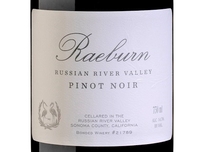 The focus of the 2019 Raeburn Pinot Noir is firmly on bright pure cherry-like fruit. Suavely textured, it is easy to enjoy this mid-weight wine now. A touch of heat and a hint of sweetness in the finish likely results from the 14.5 percent stated alcohol. … Read more
The focus of the 2019 Raeburn Pinot Noir is firmly on bright pure cherry-like fruit. Suavely textured, it is easy to enjoy this mid-weight wine now. A touch of heat and a hint of sweetness in the finish likely results from the 14.5 percent stated alcohol. … Read more
J. Lohr, Paso Robles (Central Coast, California) Cabernet Sauvignon “Signature” 2016
($90): 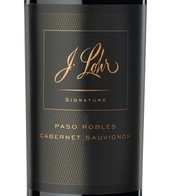 An over-sized bottle with the wine weighing in at 15.1 percent stated alcohol accurately predicts the nature of this Cabernet Sauvignon: powerful. Fruit-forward and dominant, it’s a blend of mostly Cabernet Sauvignon, with small amounts of Merlot, Malbec, Carmenere and Saint-Macaire, an ancient grape from Bordeaux, which is no longer used there, but was included in the allowed mix for Meritage wines in California. … Read more
An over-sized bottle with the wine weighing in at 15.1 percent stated alcohol accurately predicts the nature of this Cabernet Sauvignon: powerful. Fruit-forward and dominant, it’s a blend of mostly Cabernet Sauvignon, with small amounts of Merlot, Malbec, Carmenere and Saint-Macaire, an ancient grape from Bordeaux, which is no longer used there, but was included in the allowed mix for Meritage wines in California. … Read more
Black Stallion Estate Winery, Napa Valley (California) Cabernet Sauvignon Limited Release 2017
($60): 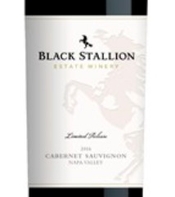 The packaging — over-sized bottle — and 15 percent stated alcohol suggests this Cabernet is from the “bigger is better” school. And there is no question, it’s a big, ripe wine with plenty of power. Yet, it’s not overblown or overdone. … Read more
The packaging — over-sized bottle — and 15 percent stated alcohol suggests this Cabernet is from the “bigger is better” school. And there is no question, it’s a big, ripe wine with plenty of power. Yet, it’s not overblown or overdone. … Read more
Agricola Punica, Isola del Nuraghi IGT (Sardinia, Italy) “Barrua” 2015
($46): 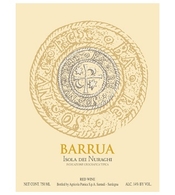 Agricola Punica is a collaboration between Tenuta San Guido, the Bolgheri producer responsible for Sassicaia, and Sardinia’s Cantina di Santadi. The late Giacomo Tachis, who was a genius at sensing the utility of the so-called Bordeaux varieties in selected Italian locales, suggested the blend of Carignano, Cabernet Sauvignon and Merlot for their wine to be called “Barrua.” … Read more
Agricola Punica is a collaboration between Tenuta San Guido, the Bolgheri producer responsible for Sassicaia, and Sardinia’s Cantina di Santadi. The late Giacomo Tachis, who was a genius at sensing the utility of the so-called Bordeaux varieties in selected Italian locales, suggested the blend of Carignano, Cabernet Sauvignon and Merlot for their wine to be called “Barrua.” … Read more
Schloss Johannisberg, Rheingau (Germany) Riesling Silberlack Trocken GG 2018
($75): 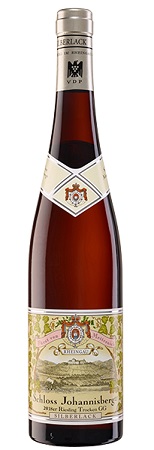 Schloss Johannisberg, whose Riesling planting started in 1719, is thought to be the oldest Riesling producer in the world. (The first documented wine harvest from the site itself was a roughly a thousand years earlier, in 817.) The estate grows only Riesling, yet makes many different wines depending on where in the vineyard the grapes grow and when they are harvested. … Read more
Schloss Johannisberg, whose Riesling planting started in 1719, is thought to be the oldest Riesling producer in the world. (The first documented wine harvest from the site itself was a roughly a thousand years earlier, in 817.) The estate grows only Riesling, yet makes many different wines depending on where in the vineyard the grapes grow and when they are harvested. … Read more
Glory in Givry: Domaine du Cellier Aux Moines

As in its more famous neighbouring region, Pinot Noir and Chardonnay reign supreme and, with rare exceptions, are the mandated grapes for the wines.
Major appellations in the Côte Chalonnaise, moving from north to south, include Rully and Mercurey, which produce both red and white wine, Givry, which produces mostly (80%) red wine, and Montagny, which produces white wine exclusively.… Read more
Naumes Family Vineyards, Rouge Valley (Oregon) Viognier 2018
($30): 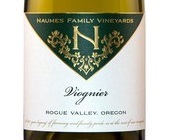 The Viognier grape is tough to translate properly into a wine. Ripeness is necessary to release its inherent floral character, but over-ripeness results in a heavy wine. Naumes strikes the balance. Lovely floral apricot aromas predict the stone fruit flavors that follow. … Read more
The Viognier grape is tough to translate properly into a wine. Ripeness is necessary to release its inherent floral character, but over-ripeness results in a heavy wine. Naumes strikes the balance. Lovely floral apricot aromas predict the stone fruit flavors that follow. … Read more
Naumes Family Vineyards, Rouge Valley (Oregon) “Triolet” 2017
($40): 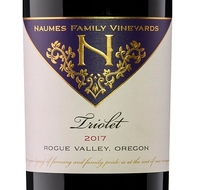 The blend, Barbera (60%) and Malbec, is unique. I know of no other winery producing it. The name, Triolet, which is a type of poem, according to the dictionary, is equally unique. Corey Shultz, the winery director, says the name is to honor the Naumes Family’s triplets and that in subsequent vintages there will be third grape in the blend. … Read more
The blend, Barbera (60%) and Malbec, is unique. I know of no other winery producing it. The name, Triolet, which is a type of poem, according to the dictionary, is equally unique. Corey Shultz, the winery director, says the name is to honor the Naumes Family’s triplets and that in subsequent vintages there will be third grape in the blend. … Read more
Naumes Family Vineyards, Rouge Valley (Oregon) Pinot Noir 2017
($40): 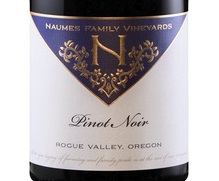 Captivating herbal notes are immediately apparent in the nose and later on the palate. A blend of several clones of Pinot Noir, this is a delicate and airy example of the varietal, displaying a wondrous mixture of savory and fruity flavors.… Read more
Captivating herbal notes are immediately apparent in the nose and later on the palate. A blend of several clones of Pinot Noir, this is a delicate and airy example of the varietal, displaying a wondrous mixture of savory and fruity flavors.… Read more
Naumes Family Vineyards, Rouge Valley (Oregon) Syrah 2017
($35): 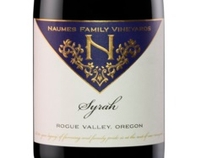 This big, bold Syrah has beautiful balance and bright acidity that keeps it fresh and lively. It conveys a splendid combination of savory, almost bacon fat-like nuances, spicy black pepper notes, and dark fruitiness. Though youthful and forceful, it is not overdone or boisterous. … Read more
This big, bold Syrah has beautiful balance and bright acidity that keeps it fresh and lively. It conveys a splendid combination of savory, almost bacon fat-like nuances, spicy black pepper notes, and dark fruitiness. Though youthful and forceful, it is not overdone or boisterous. … Read more
Naumes Family Vineyards, Rouge Valley (Oregon) Tempranillo 2017
($30): 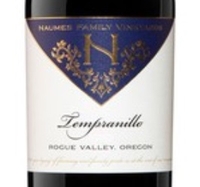 As much as I liked Naumes 2016 Tempranillo, their 2017 struck me as even better. Its firmness and minerality presents a great contrast to the fleshy and fruitier Malbec. It is structured without being aggressive or hard. Its stature is apparent in the long and attractive hint of bitterness in the finish. … Read more
As much as I liked Naumes 2016 Tempranillo, their 2017 struck me as even better. Its firmness and minerality presents a great contrast to the fleshy and fruitier Malbec. It is structured without being aggressive or hard. Its stature is apparent in the long and attractive hint of bitterness in the finish. … Read more
A Rogue in Oregon
One definition of rogue is “something out of the ordinary.” It is fitting, then, that the Naumes Family Winery is located in Oregon’s Rogue Valley, because they certainly do something out of the ordinary. Ordinary, in terms of Oregon wine, is pretty clear: superb Pinot Noir and Chardonnay, and notable Pinot Gris. … Read more
Pouilly-Fuissé Vineyards Finally Get Premier Cru Status
The Nazis were responsible for the lack of Premier Cru vineyards in Pouilly-Fuissé. As Frédéric Burrier, the head of the Pouilly-Fuissé growers’ organization, explains: In the 1940s, in Occupied France, the Germans could requisition village wines, but had to pay for ones, at least theoretically, from a higher classification.
Miolo, Vale dos Vinhedos (Brazil) Brut “Cuvée Tradition” NV
($14, CapCity Beverage): 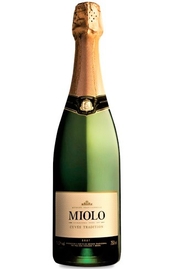 There’s probably no greater statement regarding the potential of the sparkling wine industry in Brazil than the investment by Moët & Chandon there in the 1970s. Miolo has been producing sparkling wines from there vineyards in Vale dos Vinhedos, the first Brazilian area to receive DO status, long before Moët invested in the country. … Read more
There’s probably no greater statement regarding the potential of the sparkling wine industry in Brazil than the investment by Moët & Chandon there in the 1970s. Miolo has been producing sparkling wines from there vineyards in Vale dos Vinhedos, the first Brazilian area to receive DO status, long before Moët invested in the country. … Read more
Casa Perini, Farroupilha (Serra Gaúcha, Brazil) Moscatel NV
($20, Aiko Imports): 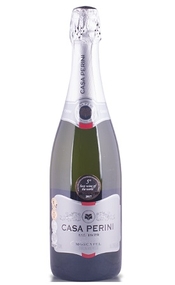 Brazil ranks third in wine production in South America after Argentina and Chile, according to The Oxford Companion to Wine. And almost a quarter of the country’s production is sparkling wine. Most of the fine wine production is located in the Serra Gaúcha area, where Italian and German immigrants settled, in the southern (cooler — away from the equator) part of the country near the border with Uruguay. … Read more
Brazil ranks third in wine production in South America after Argentina and Chile, according to The Oxford Companion to Wine. And almost a quarter of the country’s production is sparkling wine. Most of the fine wine production is located in the Serra Gaúcha area, where Italian and German immigrants settled, in the southern (cooler — away from the equator) part of the country near the border with Uruguay. … Read more
Domaine du Cellier aux Moines, Givry, 1er Cru Clos du Celliers aux Moines, Burgundy, France 2019
 Drinking Window: 2027 – 2033
Drinking Window: 2027 – 2033Domaine du Cellier aux Moines, Givry, 1er Cru Clos du Celliers aux Moines, 2018
 Drinking Window: 2025 – 2030
Drinking Window: 2025 – 2030Domaine du Cellier aux Moines, Givry, 1er Cru Clos du Celliers aux Moines, 2017
 Drinking Window: 2026 – 2030
Drinking Window: 2026 – 2030Domaine du Cellier aux Moines, Givry, 1er Cru Clos du Celliers aux Moines, 2016
 Drinking Window: 2025 – 2030
Drinking Window: 2025 – 2030Domaine du Cellier aux Moines, Givry, 1er Cru Clos du Celliers aux Moines, 2015
 Drinking Window: 2025 – 2030
Drinking Window: 2025 – 2030Domaine du Cellier aux Moines, Givry, 1er Cru Clos du Celliers aux Moines, 2014
 Drinking Window: 2020 – 2022
Drinking Window: 2020 – 2022Domaine du Cellier aux Moines, Givry, 1er Cru Clos du Celliers aux Moines, 2013
 Drinking Window: 2020 – 2022
Drinking Window: 2020 – 2022Domaine du Cellier aux Moines, Givry, 1er Cru Clos du Celliers aux Moines, 2012
 Drinking Window: 2020 – 2025
Drinking Window: 2020 – 2025Domaine du Cellier aux Moines, Givry, 1er Cru Clos du Celliers aux Moines, 2010
 Drinking Window: 2023 – 2027
Drinking Window: 2023 – 2027Domaine du Cellier aux Moines, Givry, 1er Cru Clos du Celliers aux Moines, 2009
 Drinking Window: 2022 – 2026
Drinking Window: 2022 – 2026Domaine du Cellier aux Moines, Givry, 1er Cru Clos du Celliers aux Moines, 2007
 Drinking Window: 2020 – 2020
Drinking Window: 2020 – 2020Domaine du Cellier aux Moines, Givry, 1er Cru Clos du Celliers aux Moines, 2006
 Drinking Window: 2020 – 2020
Drinking Window: 2020 – 2020Cascina Castlet, Barbera d’Asti DOCG (Piedmont, Italy) “Vespa” 2019
($35, Artisan Selections by Romano Brands): 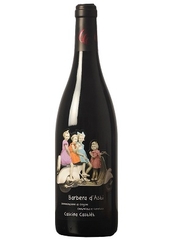 Barbera is a terrific wine for a meal because the grape has inherently high acidity, which makes it lively and perfect for food. Its problem is image. When consumers see many on retailers’ shelves selling for less than $10 a bottle, the question is, why spend more? … Read more
Barbera is a terrific wine for a meal because the grape has inherently high acidity, which makes it lively and perfect for food. Its problem is image. When consumers see many on retailers’ shelves selling for less than $10 a bottle, the question is, why spend more? … Read more
Cascina Castlet, Barbera d’Asti DOCG (Piedmont, Italy) “Litina” 2016
($40, Artisan Selections by Romano Brands): 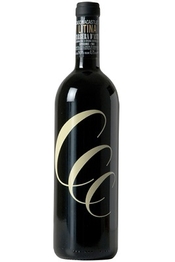 The label sports CCC in bold letters on the bottle, the abbreviation of the winery, Cascina Caslet, plus the village, Costigliole, where it’s located. The important information can be found on the neck label. Similar to their Vespa bottling, the Litinia, named after a family member, is a robust wine that delivers black fruitiness buttressed by zippy acidity. … Read more
The label sports CCC in bold letters on the bottle, the abbreviation of the winery, Cascina Caslet, plus the village, Costigliole, where it’s located. The important information can be found on the neck label. Similar to their Vespa bottling, the Litinia, named after a family member, is a robust wine that delivers black fruitiness buttressed by zippy acidity. … Read more
Gary Farrell Vineyards & Winery, Sonoma Coast (Sonoma County, California) Pinot Noir Gap’s Crown Vineyard 2016
($80): 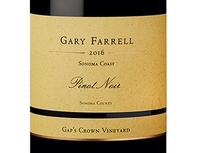 Site matters. A skeptic of that statement just needs to taste this Pinot Noir made from grapes grown in a vineyard located in the windy Petaluma Gap of Sonoma next to the Gary Farrell Pinot Noirs from the Russian River Valley. … Read more
Site matters. A skeptic of that statement just needs to taste this Pinot Noir made from grapes grown in a vineyard located in the windy Petaluma Gap of Sonoma next to the Gary Farrell Pinot Noirs from the Russian River Valley. … Read more
Gary Farrell Vineyards & Winery, Santa Maria Valley (Central Coast, California) Pinot Noir Bien Nacido Vineyard 2016
($70): 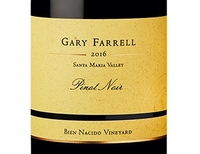 Santa Maria Valley’s east-west orientation is unusual in California where most of the valleys run north-south. Its orientation, which allows cooling Pacific Ocean breezes, explains its cooler climate despite its southern California location. The bright red fruit-like profile reflects the coolness of the site. … Read more
Santa Maria Valley’s east-west orientation is unusual in California where most of the valleys run north-south. Its orientation, which allows cooling Pacific Ocean breezes, explains its cooler climate despite its southern California location. The bright red fruit-like profile reflects the coolness of the site. … Read more
Gary Farrell Vineyards & Winery, Russian River Valley (Sonoma County, California) Pinot Noir Toboni Vineyard 2016
($55): 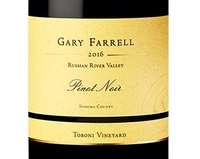 The warmth of the Russian River Valley compared to the Sonoma Coast or Santa Maria Valley accounts for riper raw material for this Pinot Noir, which is translated into a more robust wine. Similar to the one from Martaella Vineyard, it delivers power at the expense of subtlety. … Read more
The warmth of the Russian River Valley compared to the Sonoma Coast or Santa Maria Valley accounts for riper raw material for this Pinot Noir, which is translated into a more robust wine. Similar to the one from Martaella Vineyard, it delivers power at the expense of subtlety. … Read more
Gary Farrell Vineyards & Winery, Russian River Valley (Sonoma County, California) Pinot Noir Martaella Vineyard 2016
($65): 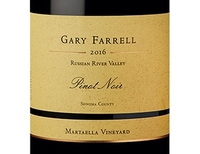 Those who love a more robust style of Pinot Noir will embrace the Martaella Vineyard bottling from Gary Farrell, in relation to the rest of this producer’s lineup. The focus here is on the ripe, plum-like fruitiness. As with all of Farrell’s Pinot Noirs, the tannins are fine and the textured refined, which makes it easy to enjoy now. … Read more
Those who love a more robust style of Pinot Noir will embrace the Martaella Vineyard bottling from Gary Farrell, in relation to the rest of this producer’s lineup. The focus here is on the ripe, plum-like fruitiness. As with all of Farrell’s Pinot Noirs, the tannins are fine and the textured refined, which makes it easy to enjoy now. … Read more
